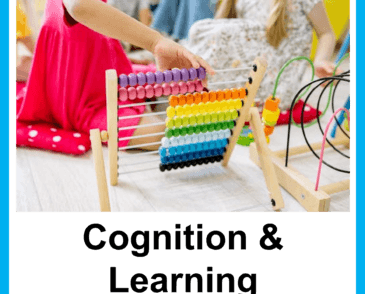

Last Updated - February 5, 2025
Each Unique Child Presents in Their Own Way – Early Years – Cognition and Learning
Here is a checklist, based on the above Characteristics of Effective Learning observations. It lists typical responses from young children, whose cognition and learning is developing at a different pace and pattern than that expected. From identifying some of these responses linked to your unique child, you may be able to make those small adaptations or change your approaches to help the child make progress.
Playing and Exploring
- The child may need encouragement to explore toys and objects using their mouths, hands & bodies.
- The child may be distracted by a large amount of play choice.
- The child may be interacting with simple cause and effect play e.g., peekaboo, ready steady go games.
- The child may enjoy opening and closing containers e.g. Jack-in-a-box.
- The child may enjoy filling and emptying containers.
- The child may be lifting flaps in a book to reveal pictures.
- The child may be investigating simple problem-solving games e.g. putting things inside others and taking them out again or stacking and posting, activating press button toys.
- The child may be offering and receiving objects from others.
- The child may have strong play preferences that are exclusive to other experiences.
- The child may need time and opportunities for repetition to enable them to engage in ‘new’ experiences.
- The child may prefer low-arousal spaces with reduced sound and visual stimulation.
- The child may show confusion with sound games/songs using DVDs or CDs.
- The child may need practise and a reduced pace, to show anticipation of actions and words in repetitive rhymes and songs.
Active Learning
- The child may follow routines when shown an object to help them understand what is happening.
- The child may understand routines by looking at the context around them e.g. get their boots when the door to outside is opened.
- The child may need visual cues to help them develop active problem-solving skills to enable them to explore further e.g. looking under the table for a dropped toy when the adult signs ‘Under’.
- The child may be developing ‘trial and error’ behaviours in play and everyday routines.
- The child enjoys returning to play experiences time and time again, building their confidence in the play through their success.
- The child may show sensory avoidance to a range of sensory experiences, e.g. showing over sensitivity to touch – avoids messy play, walks on tip toes, intolerant to clothing or changing of nappies.
- The child may show sensory seeking behaviours, e.g. showing under sensitivity to smell & taste – sniffs or licks objects and people, chews or mouths objects, grinds teeth.
- The child may exclusively engage in one type of play material/sensory experience and engage in long-lasting repetitive play.
Creating and thinking critically
- The child may carry out single play actions on imitation e.g. give teddy a hug.
- The child may use common objects on themselves in early pretend play e.g. put a hat on.
- The child may use common objects on another person e.g. brushes mummy’s hair.
- The child may begin to show early sorting skills such as finding the ‘same’ when shown an object or put two pieces together to make a whole e.g. lid on a teapot.
- The child communicates exclusively about things in the ‘here and now’.
- The child may rely on adults to show them how to explore and engage in an activity.
- The child may be easily distracted by the environment around them and find it difficult to settle to an activity.
- The child may react unexpectantly to key adults.
- The child may show interest in repetitive rote counting, number rhymes and songs.
- The child may show counting-like behaviours such as vocalising and pointing to objects using number-like words.
- The child may understand or use quantity words such as ‘more’ or ‘lots’ and demonstrate this in different ways.
- The child may need to be specifically shown how to engage in construction resources and inset puzzles.
- The child may need signs to understand and use size and position words in everyday contexts.
View and/or download the Torbay Early Years Toolkit here: Torbay Early Years Graduated Approach Toolkit – Family Hub
